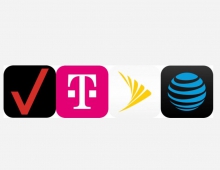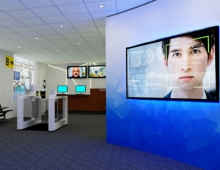
Verizon and NEC Set Records For the Highest-Capacity Transmission Over Field Fiber
For the third consecutive year, Verizon and NEC announced they have set an industry record, this time by successfully sending the highest-capacity transmissions for regional and long-haul distances over field fiber.
The achievement was accomplished by tightly packing optical channels in two bands of the optical fiber spectrum. Previous field transmission trials used a single optical band. By expanding from one band to two bands -- the C-band and the L-band -- Verizon and NEC were able to transmit 40.5 terabits per second (1 terabit equals 1,000 gigabits) for a long-haul distance of more than 1,800 kilometers (1,118 miles) and 54.2 Tb/s over a regional distance of more than 630 kilometers (391 miles), using Verizons fiber loop outside Dallas.
The results of the latest trial, performed in late 2012, were accepted and presented as a post-deadline paper at the OFC/NFOEC Conference and Expo last month in Anaheim, Calif.
The ability to use current field fiber to carry higher capacity rates enables carriers to avoid the need to deploy new fiber and, as a result, better utilize current network infrastructure.
As increased capacity demands are driven by video services, wireless applications, real-time gaming, massive data storage and increased IP services, network providers continue to look for ways to meet that demand without performing large scale infrastructure upgrades. By packing optical channels together and varying different properties of the lightwaves for specific transmission conditions, these trials prove the feasibility and related efficiencies of deploying up to 40 Tb/s for long haul distances and more than 50 Tb/s for regional distances.
The results of the latest trial, performed in late 2012, were accepted and presented as a post-deadline paper at the OFC/NFOEC Conference and Expo last month in Anaheim, Calif.
The ability to use current field fiber to carry higher capacity rates enables carriers to avoid the need to deploy new fiber and, as a result, better utilize current network infrastructure.
As increased capacity demands are driven by video services, wireless applications, real-time gaming, massive data storage and increased IP services, network providers continue to look for ways to meet that demand without performing large scale infrastructure upgrades. By packing optical channels together and varying different properties of the lightwaves for specific transmission conditions, these trials prove the feasibility and related efficiencies of deploying up to 40 Tb/s for long haul distances and more than 50 Tb/s for regional distances.





















